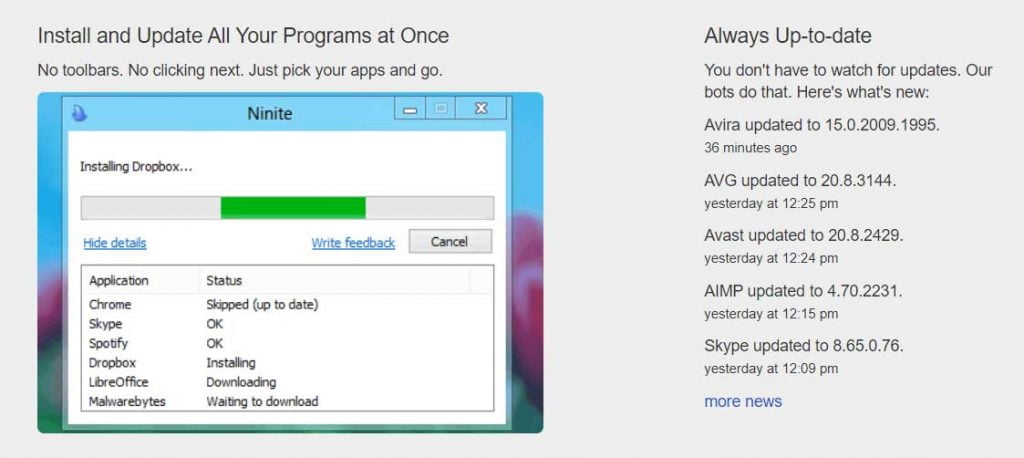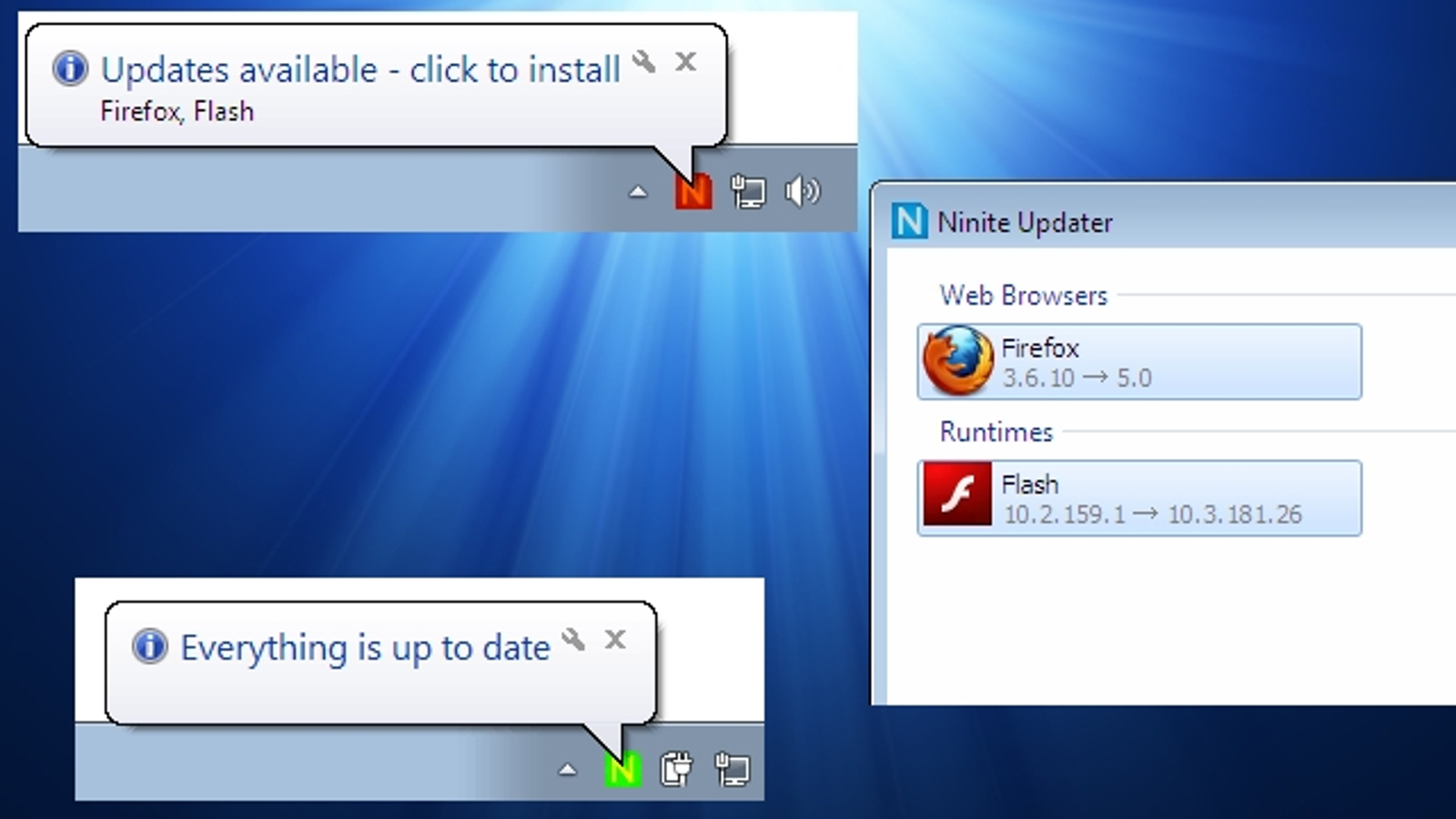
The Testing Procedureįirst, we installed all the applications used for testing and, of course, the applications which we were about to test.


The usefulness of Software Update Monitors (SUMs) is proven by the fact that they help in keeping applications which are frequent targets for malware creators and distributors up-to-date and thus provide a more secure system. We made sure to include some of the most vulnerable software for Windows: Adobe Reader, Adobe Flash Player, Adobe Shockwave Player, and Oracle Java. In order to test the effectiveness of the products that are meant to keep our applications up-to-date, we chose a mix of popular software used for the most common computing tasks: 7-Zip 9.20 (64-Bit edition), Adobe Reader 10.1.0, Adobe Flash Player 17.0.0.188, CCleaner, Oracle Java 7.0.79 (64 Bit), VLC 2.1.0 (32 bit), K-Lite Codec Pack Full 10.90, Adobe Shockwave Player 12.0.9.149, Mozilla Thunderbird 37.0 beta 1, PDFCreator 1.7.3, Virtual CloneDrive 5.4.5, Ashampoo Burning Studio 12.0.5, MiniTool Partition Wizard Home Edition 8.11, FileZilla 3.10.3, Mozilla Firefox 38.0.5, LibreOffice 4.4.2.2 and VirtualBox 4.3.26.Īs you can see, the versions we used for this test are not the latest ones available for each of these applications. We ended up testing the following tools: Appupdater 2.2, FileHippo App Manager 2.0, Ninite 4.5.2, Secunia Personal Software Inspector (PSI) 3.0, Software Informer Client 1.4, Software Update Monitor (SUMo) 3.14 and Heimdal Free 1.10.3.

Secunia Personal Software Inspector (PSI)Įven though there are plenty of options available, we tried our best to pick a mix that includes both popular and efficient programs in this particular niche.Important Information To Be Considered Beforehand.


 0 kommentar(er)
0 kommentar(er)
